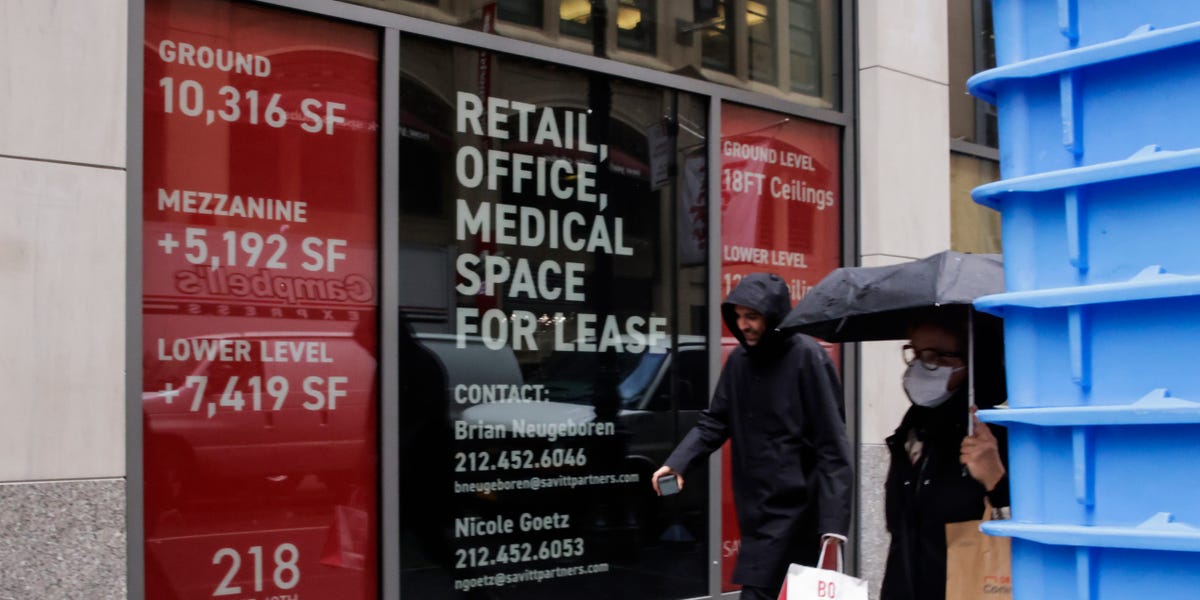They can and will try, but I mean when it becomes abundantly obvious everyhouse is empty what will stop us all from seizing the houses for ourselves
I get looks like I'm out of my fucking mind when I "joke" about it
Comrades, what if we started organizing for this now with each other (in our respective local orgs) and prepared for prices to crash, did what the real-estate pigs did (on a smaller scale obviously) and then provided free or super low-cost housing for people because we have the ownership and can simply let them live there?
Just an idea, I know it's speculative so it might not be the best decision. Could just use it on other stuff
If only the municipalities would eminent domain them at the dip and make them into pubic housing. We’re programmed to view public housing as a drain on resources, when the rents in fact contribute to the city’s revenue.
More likely it will be yet another huge transfer of wealth upwards.
A recession always works in favor of the banks and hurts the working class. The working class are kicked to the street and left to starve while the rich buys everything at a discount.
In the “Great Recession” that began in 2007, tens of millions in the United States lost their jobs, homes, healthcare, and pensions. The crisis was so deep and the government response was so inadequate that, when the COVID-19 pandemic struck this year, many hadn’t yet recovered from it.
The social costs accompanying mass unemployment, evictions, and foreclosures are hard to quantify, but they’re immense: families torn apart, soaring drug and alcohol abuse, rising suicide rates, and more.
As these words are written, we are still in the very early stages of the medical, economic, and societal crisis of 2020.
Periodic crises, as this pamphlet points out, are a built-in feature of capitalism. They have been since capitalism became the dominant world system more than two centuries ago. Most often, economic recessions and depressions have been caused by capitalist overproduction, or the production of too many commodities that can be sold at an adequate profit, a glut on the market that leads to cutbacks and layoffs.
Inevitably in the boom (late) phase of the capitalist economic cycle, wild speculation breaks out, egged on by the system’s propagandists proclaiming, “this time it’s different.” But the boom always ends in a bust, and the only thing that is actually “different” is the event or events that trigger the crash.
In the 2008 crash, it was capitalist overproduction, particularly of houses, combined with the most extraordinary forms of fraudulent wheeling-and-dealing that brought the entire financial system to near-collapse.
As “The Myth of Democracy” documents, despite the most egregious criminal activities, including massive drug money laundering, serial preying on the elderly, massive and pervasive fraud in the mortgage business and more, not one of the top bankers spent a day in jail. Instead, they were declared “too big to fail” and were bailed out to the tune of $800 billion, with trillions of dollars more made available to them if needed. The paltry fines for their crimes were invariably paid by the institutions, not the criminals in three-piece suits.
In 2020, it was the capitalist world’s unpreparedness for a pandemic that brought much of the global economy to a screeching halt. The COVID-19 epidemic struck at a time when the economic system was again extremely over-leveraged, as the gamblers in the big Wall Street casino were playing with immense piles of borrowed money.
The rapid shutdown of much of the economy, necessary to limit the spread of the deadly virus, caused the layoff of tens of millions of workers virtually overnight. In just three weeks following the crash, 17 million workers filed first time unemployment claims.
Never in the country’s history have so many workers lost their jobs so quickly. In addition, millions of small businesses and shops were shuttered.
Once again, as in 2008-09, the Federal Reserve Bank, Treasury Department, Congress, and the White House have come riding to the rescue of the banks, hedge funds, and other investors. While out of fear of mass anger, the initial bailout package provides limited support for “qualified” fired workers and small businesses, it offers a mind-boggling $4.5 trillion–$4.500,000,000,000–in support to the capitalist bankers and investors, with more to come if needed.
What the crises of 2008-09 and 2020 have conclusively proven is that the capitalist class is a parasitic class. While capitalist ideology glorifies the “bold entrepreneur,” the reality is that capitalism cannot live without massive state support.
In the midst of the current crisis, millions of health, food production, delivery, sanitation, utility, and other vital workers are literally risking their lives to keep society going. Meanwhile, the capitalist class lives hidden away in luxury, contributing nothing of value to society.
It’s time for this to end.
https://www.liberationschool.org/rule-of-the-banks-pt-1/







